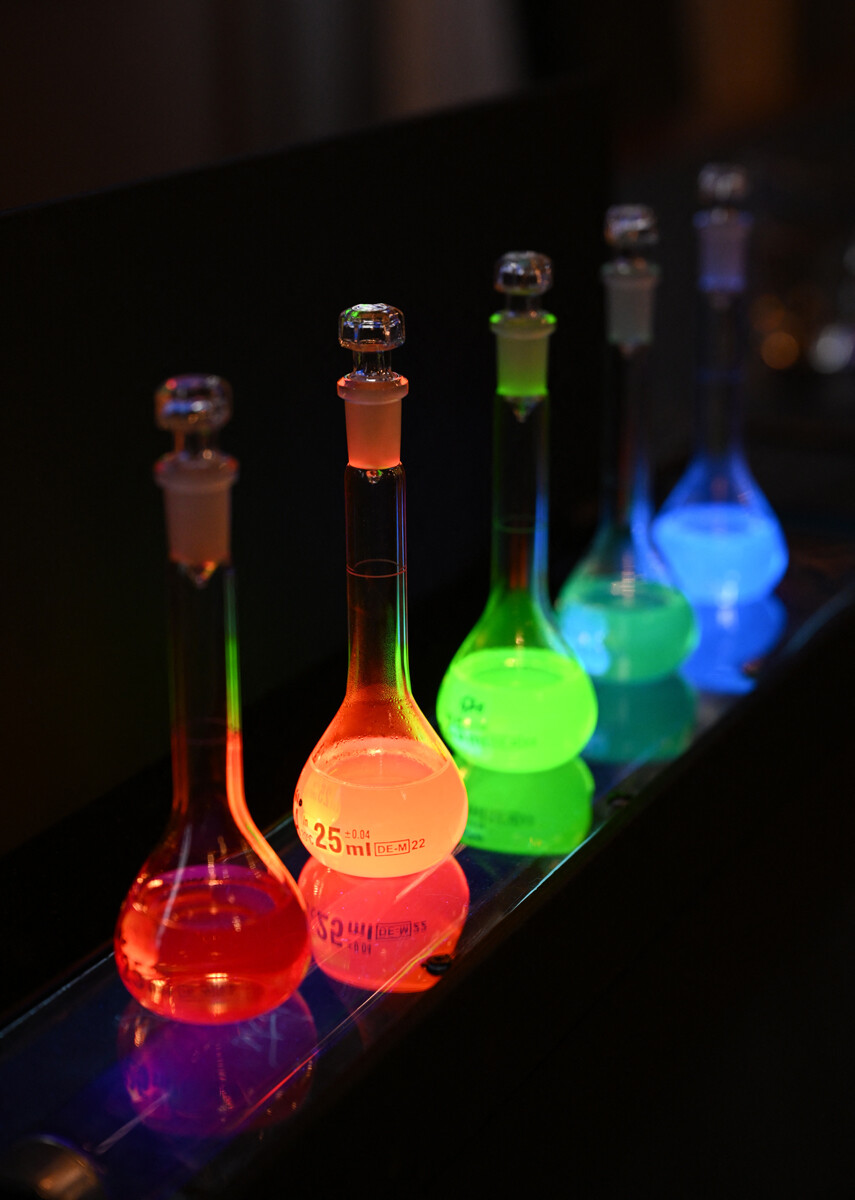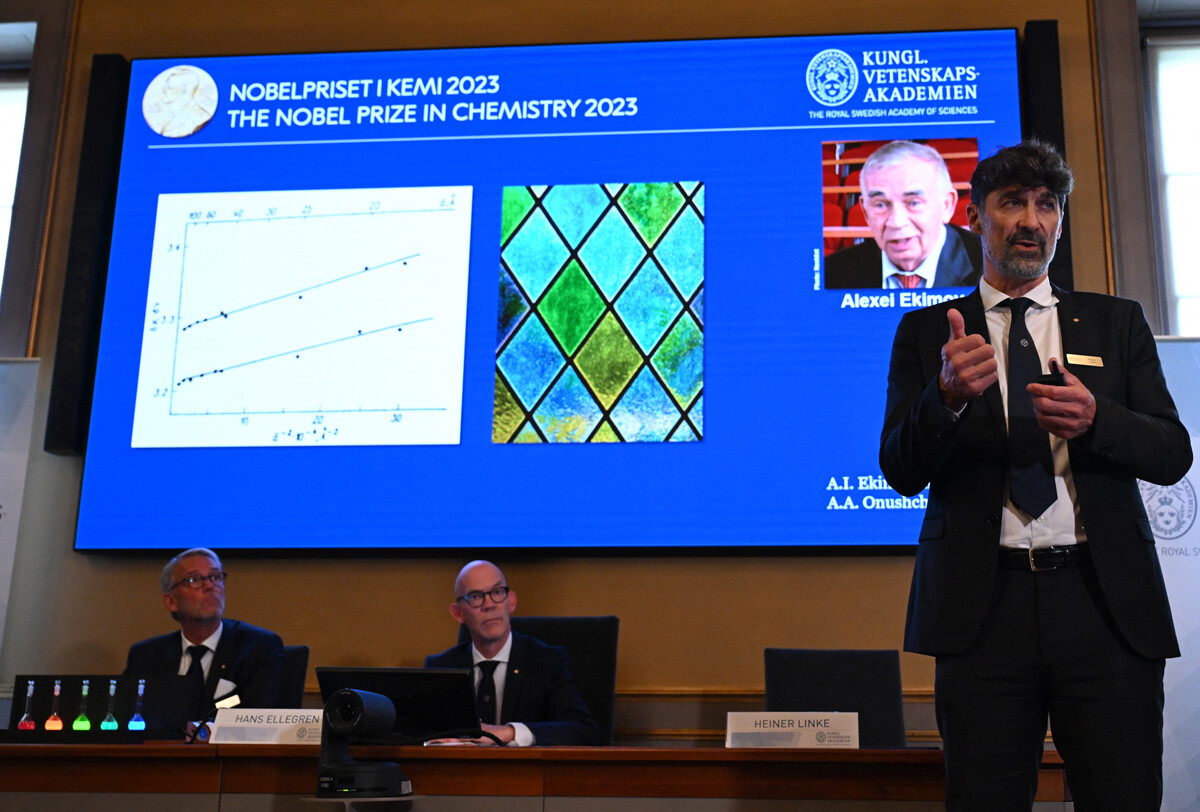
The announcement of the winners of the 2023 Nobel Prize in chemistry at Royal Swedish Academy of Sciences in Stockholm on October 4, 2023.
Jonathan NACKSTRAND / AFPThe miniaturized size of these nanoparticles determines their properties. For example, they are able to spread their light from LED lamps for a long time. Quantum dots could be used in medicine, and in the future they could guide surgeons when they remove tumor tissue, among many other things.

Laboratory flasks used for explanation during the announcement of the winners of the 2023 Nobel Prize in chemistry.
Jonathan NACKSTRAND / AFPIn the future, there is hope that quantum dots can also contribute to flexible electronics, tiny sensors, thinner solar cells and encrypted quantum communication.
Back in the 1980s, the Russian scientist noticed that the size of particles matters and even their luminescence and color in quantum effects depends on it.

Explanation of Alexei Ekimov's discovery during the announcement of the winners of the 2023 Nobel Prize.
Jonathan NACKSTRAND / AFPAlexei Ekimov was born in the USSR in 1945 and graduated from the Physics Department of Leningrad University. He became a candidate of physical and mathematical sciences in 1974 and a PhD in 1989. Both of his dissertations were devoted to the properties of semiconductors.
He has been living and working in the U.S. since 1999 and was formerly the Chief Scientific Officer of Nanocrystals Technology Inc, New York, U.S.
Congratulations to Alexei Ekimov!
Dear readers,
Our website and social media accounts are under threat of being restricted or banned, due to the current circumstances. So, to keep up with our latest content, simply do the following:
If using any of Russia Beyond's content, partly or in full, always provide an active hyperlink to the original material.
Subscribe
to our newsletter!
Get the week's best stories straight to your inbox